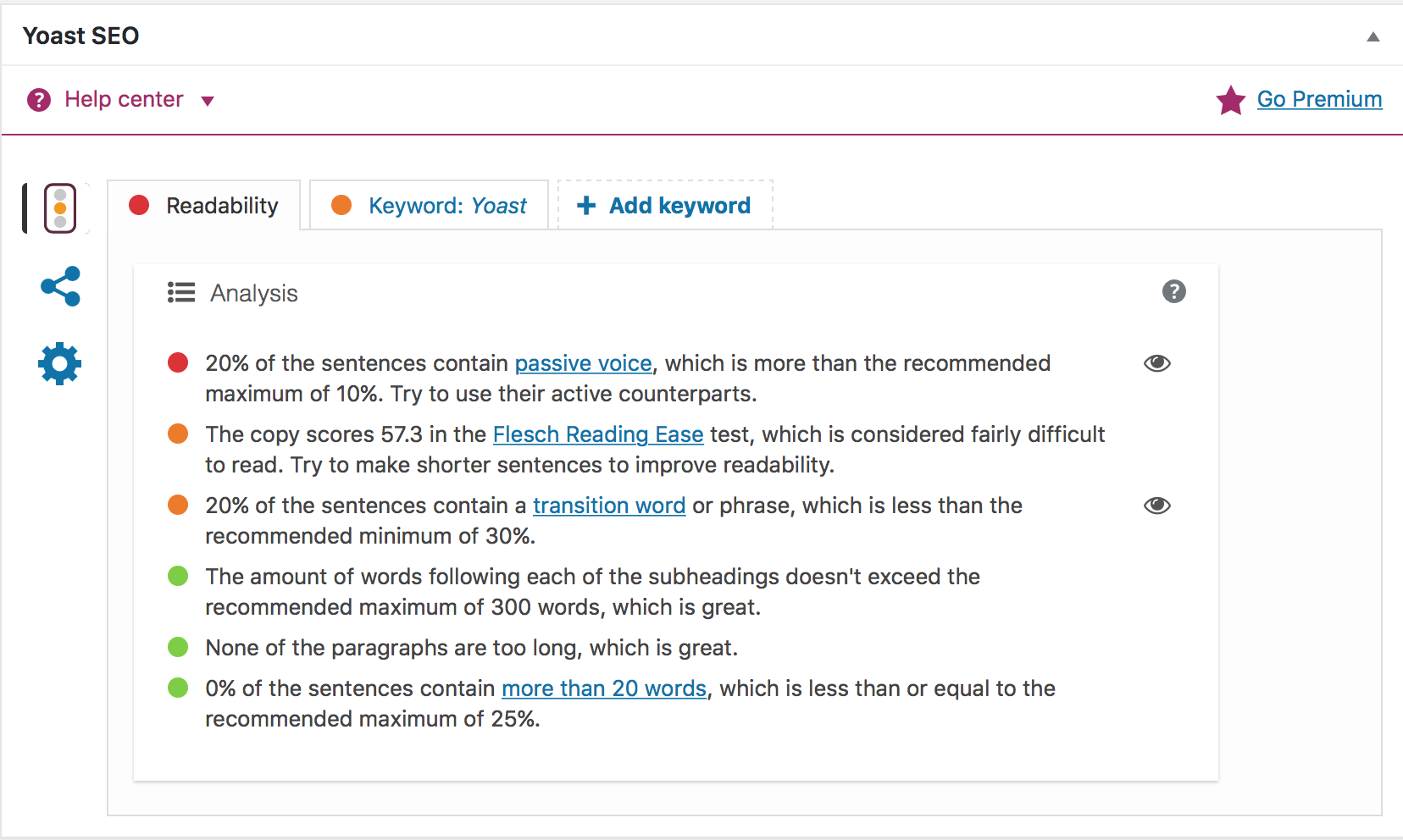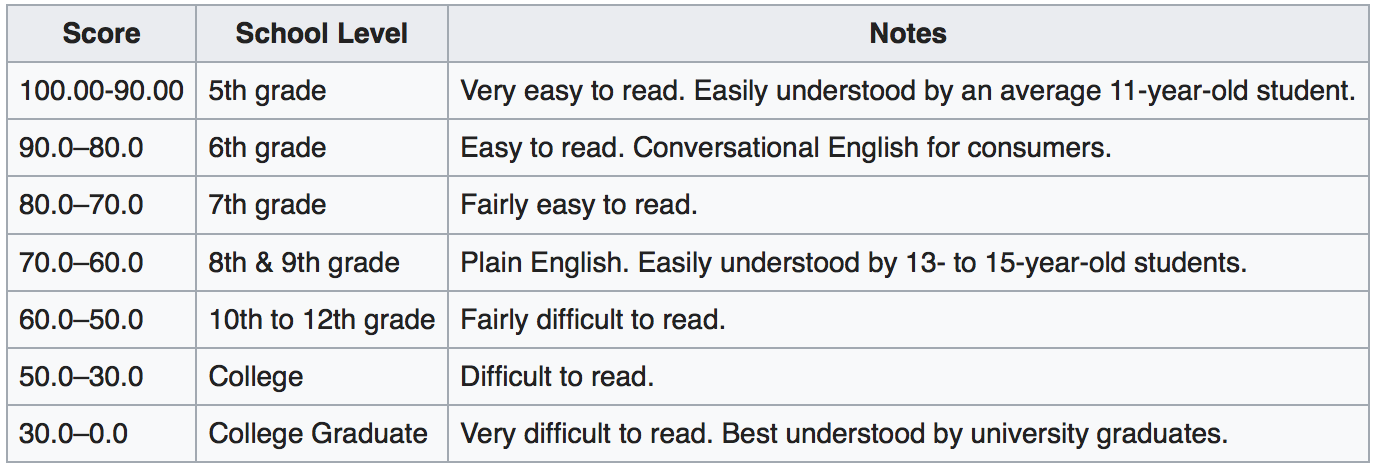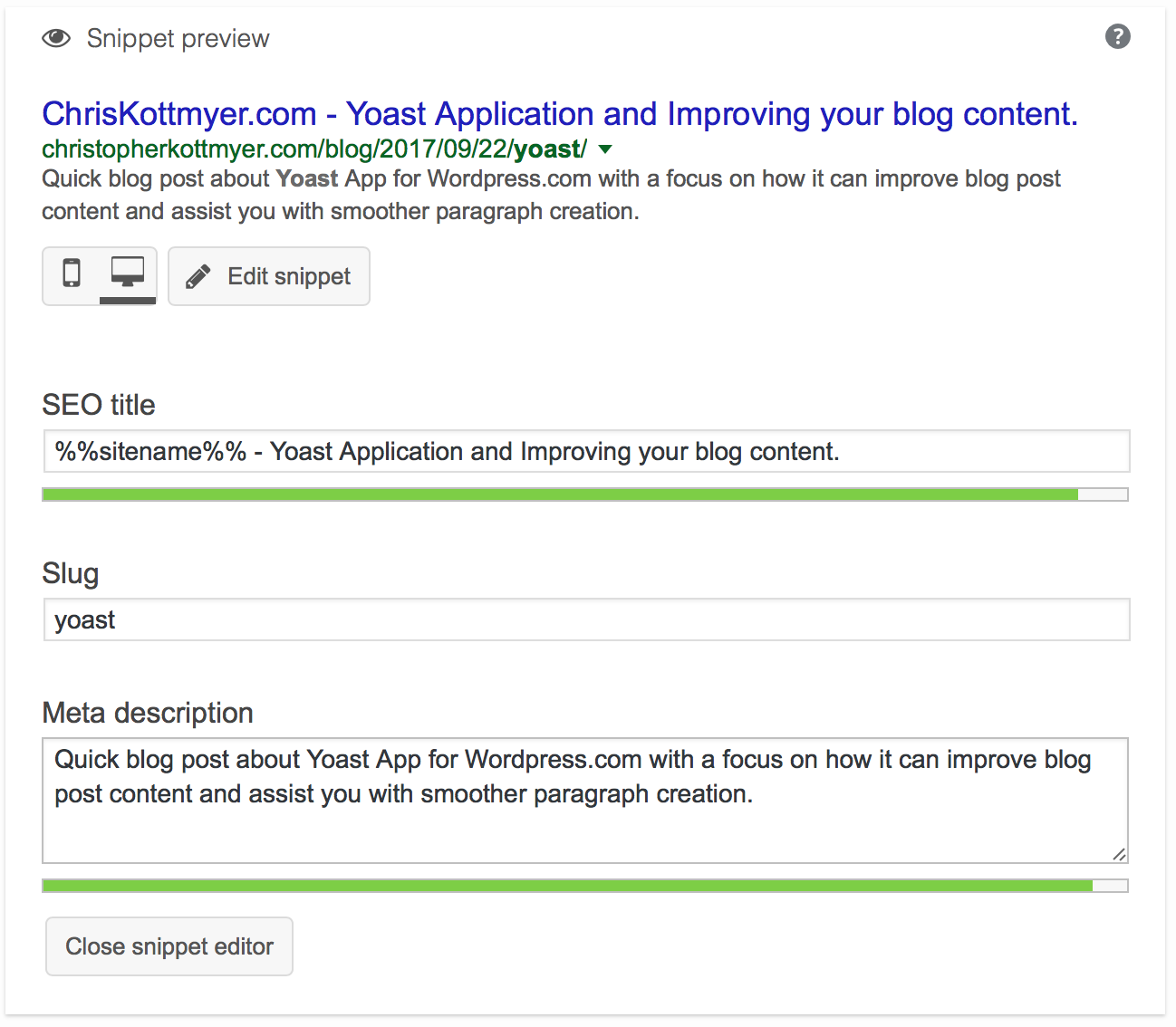Introduction
Yoast (website) is a group dedicated to SEO, which provides a free WordPress plugin to improve your website. The plugin has useful features. For example, it computes a readability score and scores your post for Google keywords:

Readability
Yoast plugin makes suggestions to improve readability of your blog posts. On Yoasts website, you will see a summary of how to plan blog posts:
Within the practical tips webpage, Yoast explains the importance of headers (<h1>,<h2>…). Headers, larger text found above paragraphs, provide context about the paragraphs that follow. This provides Google with benefit when matching search queries with your website. The post discusses the use of transition words to connect and smoothen the flow of the paragraphs. Yoast app automatically calculates this for the blog post you are typing. It recommends that 30% of words be transition words.
Transition words are one of three main metrics I often work on to improve posts. The other two are active vs passive voice and Flesch Reading Score. Active voice places the emphasis of the sentence as the main object instead of the subject. For example, “Chris plays the trumpet” is active voice vs passive “the trumpet is played by Chris. Active voice is considered less confusing then passive voice. With passive voice, it is harder to figure out what the sentence is about. More about passive voice below:
The last metric on readability is the Flesch Reading Ease test (wiki:Flesch-Kincaid readability test). Flesch test provides a formula that is supposed to correlate with ease of use:
Formula

Results

Formula Conclusion
The major conclusion from this formula is that you want short sentences with few syllables. This style of writing correlates with easier comprehension. It also decreases the odds people will run away from your website.
Key Words
Another section of Yoast focuses on key words. Key words are words in Google search queries that you would like your post to be associated with. For example, I might want this specific blog post to show up when people type: “Improve blog post readability” or “Yoast features” into Google. The underlined words would be my key words. The plugin provides key metrics on your chosen keyword:

How do I look on Google?
The last cool feature worth mentioning is you can edit how you look like on Google. Evidently, a website can provide some metadata (data about the webpage to Google), which tells Google how to present your webpage as a search result. The below form provides SEO Title, the blue name (hyperlink) of your website. A slug, which is the end of your url, in the below case (yoast is the slug): christopherkottmyer.com/blog/2017/09/22/yoast. As well as the description google uses for your webpage.

Overall, Yoast provide a really cool tool set to improve your blog posts. It also provides a study into what an expert thinks is great content. Hoping this helps readers develop better content and improve their own readability!
Best luck blogging!
Chris






